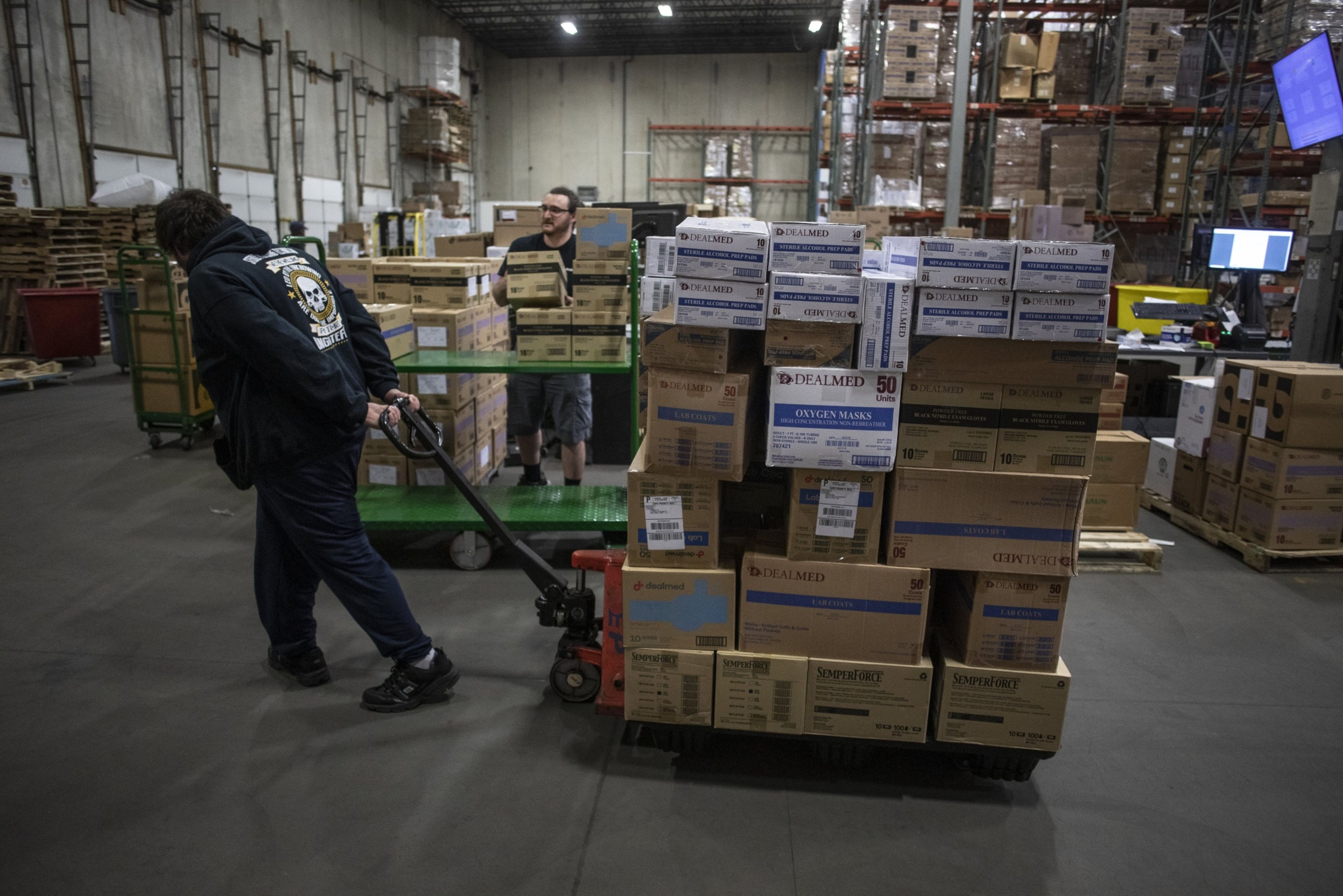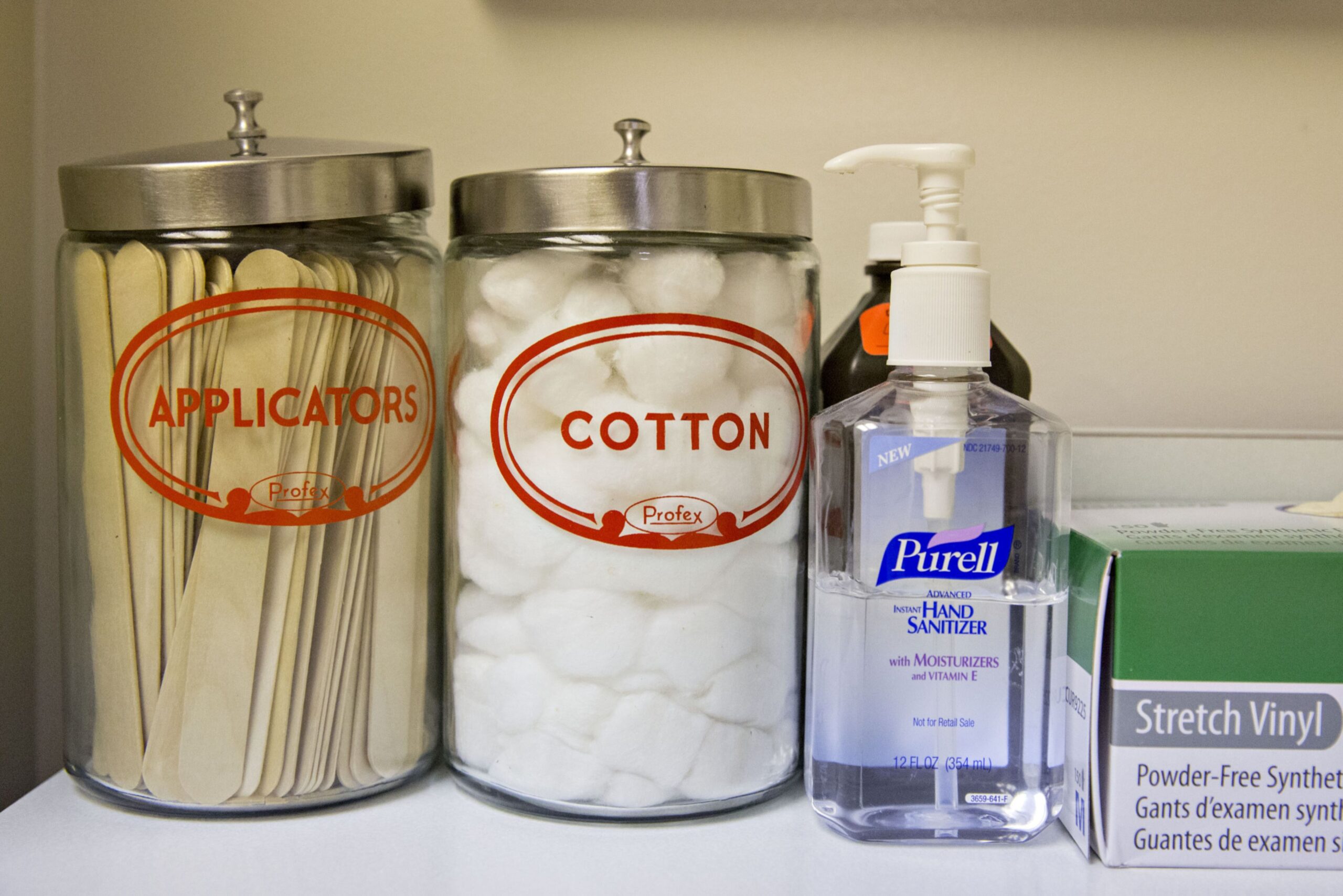(Bloomberg) —
The health-care industry accounts for 8.5% of the United States’ greenhouse gas emissions, almost as much as agriculture. So the Biden administration is pushing hospital systems to do more to combat climate change: The US Department of Health and Human Services has asked hospitals, health suppliers, drug companies and others in the industry to pledge to reduce their GHG emissions to net zero by 2050, inventory their supply chain emissions and develop a climate resilience plan for their facilities.
Some hospitals have already taken carbon-cutting steps like installing on-site solar power, purchasing renewable energy, and improving energy efficiency in their buildings. But the vast majority of emissions in the sector — 80% — come from the medical supply chain. These are difficult for hospitals to address because they’re not under their direct control.
Health-care leaders are now looking for ways to cut these Scope 3 emissions, knowing that otherwise, attempts to decarbonize the sector will fall short.
“The supply chain is absolutely critical to this success,” HHS Assistant Secretary for Health Rachel Levine said. “Without dealing with the supply chain, we won’t be successful and that’s a challenge, but we’re going to work on it.”

Chemicals, pharmaceuticals, medical devices and food are among the largest contributors to hospitals’ supply-chain emissions, said Jodi Sherman, a professor at the Yale School of Medicine and director of the Yale Program on Healthcare Environmental Sustainability. Addressing the unsustainable supply chain has become even more critical after hospitals experienced shortages during the Covid-19 pandemic. Nurses and doctors had to reuse masks and gowns using protocols that hadn’t been fully tested for safety. Finding ways to use those items more efficiently could help with both emissions and future disruptions, including those stemming from climate-related weather events.
Deciding what products to use in the operating room can be “a little bit harder” than where to get a hospital’s energy from because it involves more decision-makers, according to Lovisa Gustafsson, vice president of controlling health-care costs at the Commonwealth Fund, which promotes improvement and equity in health care. “You never want to do anything that’s going to sacrifice quality of care or access to care, or anything like that. But there definitely are questions there in terms of how things could be done in a better way,” she said.
There has been a perception in the sector that green initiatives are costly, but “you’re choosing to eliminate waste, and waste is usually associated with cost,” said Matthew Meyer, co-chair of the University of Virginia health sustainability committee and a professor of anesthesiology. A 2019 study found that the cost of waste to the US health-care system is $760 billion to $935 billion annually.
To curtail their Scope 3 emissions, health systems are considering putting pressure on their suppliers to move toward more sustainable practices. They are also trying to stem the consumption of single-use items inside their walls.
Hospitals have a major card to play when it comes to getting their suppliers to address their climate footprint—massive purchasing power. They typically get medical supplies from distributors like McKesson Corp. and AmerisourceBergen Corp., and often partner with other hospitals to use their collective purchasing power to negotiate discounts. If one large hospital system or one of these groups pushes their suppliers on addressing emissions, that could affect a supplier’s bottom line, and “these companies will start to take notice,” Meyer said.
AmerisourceBergen, one of the largest medical supply distributors in the US, signed the HHS pledge and plans to reduce its Scope 1 and 2 emissions by 50% in 2032, a spokesperson said. The company says it is cutting carbon through more efficient energy usage in buildings and transportation and by expanding its renewable energy portfolio.
At least two major hospital systems — Kaiser Permanente and Providence Health and Services — are already working with suppliers on strategies to tamp down on emissions, the systems said. Health Care Without Harm, an advocacy organization focused on addressing climate change in health care, has been consulting with its members to put together questions that health systems can ask suppliers, such as whether they are monitoring their emissions or have an action plan to reduce them, said Antonia Herzog, associate director of climate policy and advocacy.
If the whole health-care system is demanding this, “vendors are going to have the option to either be public about this information and work to make their product the most sustainable … or they’re going to risk losing the contract,” Meyer said.
Researchers and hospitals are looking to the UK’s National Health Service as a model. It has a plan to decarbonize by 2045 and has reduced its emissions by 26% from 1990 to 2020. The NHS requires its larger suppliers to report their greenhouse gas emissions through a standardized framework, benchmark them, and manage them with a goal of getting to net zero, Sherman said, and it plans to work with smaller suppliers to try to reach the same goal.
Hospitals can also control how much waste they produce. Many items used daily are designed to be discarded after a single use, which is both expensive and bad for the environment.
Non-reusable items like syringes and IV tubing don’t account for most of the waste. Things like blood pressure cuffs, pulse oximetry probes, bed linens and even expensive devices such as laparoscopic instruments are often designed for disposal when they could be sterilized and used again. The manufacture of replacements for these discarded items generates more emissions.
Sherman calls this an “unscrutinized, out of control, largely non-evidence-based trend,” which has left the US vulnerable to supply-chain interruptions both from health emergencies like Covid-19 and climate-related extreme weather. The federal government could require companies seeking Food and Drug Administration approval to design their products for reuse and to include that in their applications, she added.
Hospitals also routinely throw away billions of dollars worth of drugs each year because the vials are large and regulations prohibit them from being split between patients. “In the operating room, I have a vial that is 99 times more than I need. And I have to throw it away,” said Sherman. Potential solutions modeled on the NHS include hospitals buying right-sized packages and only stocking the amount of a drug they need, to avoid having expired stock that has to be tossed out.
Seema Wadhwa, executive director of environmental stewardship at Kaiser, said the system recently worked with its supplier for disinfecting wipes to cut waste. Normally the wipes come in a hard-case canister that has residual chemicals considered hazardous. The supplier now provides the wipes in containers like those that hold diaper wipes. They can be transported more easily, create less waste and don’t have the dangerous chemicals.
Shira Stein is a reporter for Bloomberg Law.
To contact the author of this story:
Shira Stein in Arlington at sstein51@bloomberg.net
© 2022 Bloomberg L.P.





